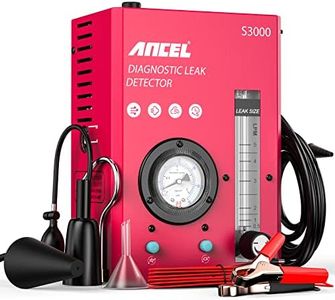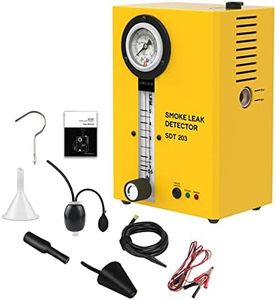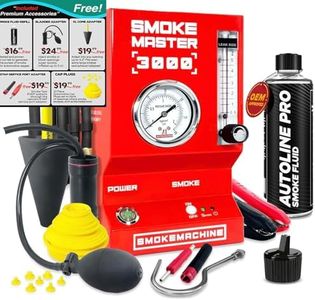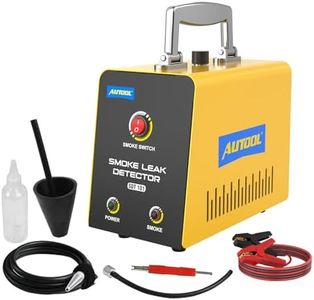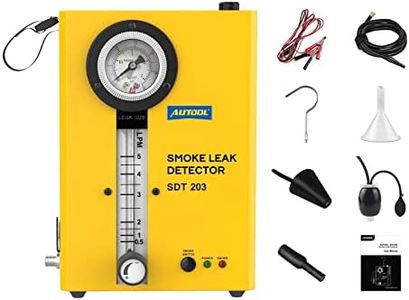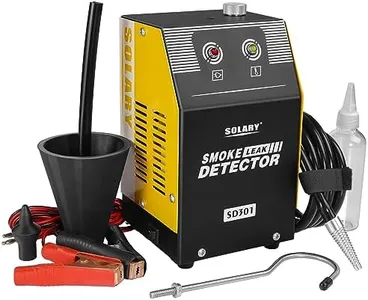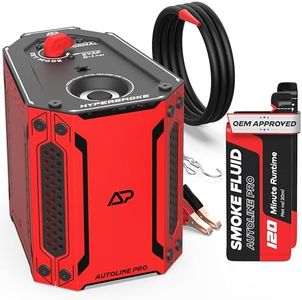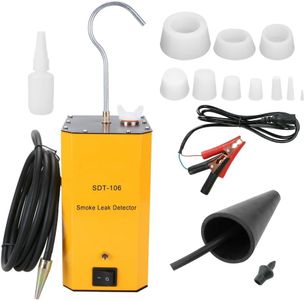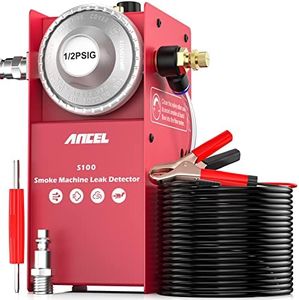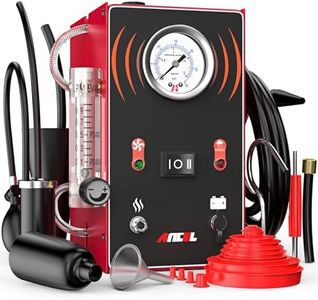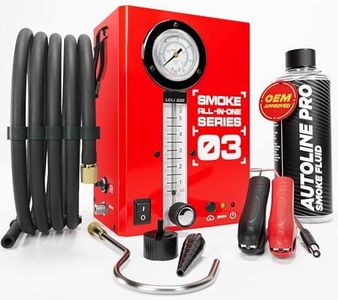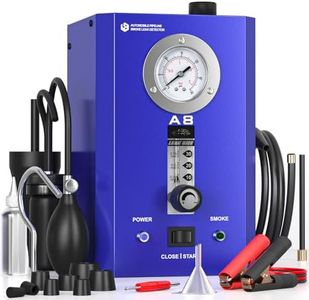We Use CookiesWe use cookies to enhance the security, performance,
functionality and for analytical and promotional activities. By continuing to browse this site you
are agreeing to our privacy policy
10 Best Automotive Smoke Machines
From leading brands and best sellers available on the web.By clicking on a link to a third party's website, log data is shared with that third party.
Buying Guide for the Best Automotive Smoke Machines
Choosing an automotive smoke machine is an important step if you work with diagnosing leaks in vehicles. Whether you're a car enthusiast or an automotive professional, understanding what to look for helps you find a unit that is reliable, effective, and suitable for your typical repair needs. When comparing different smoke machines, pay close attention to their capacity, compatibility, and ease of use to ensure seamless troubleshooting of vacuum, EVAP, or intake system leaks.Smoke Output VolumeSmoke output volume refers to how much smoke the machine produces per minute. This is important because a higher smoke output can help you identify leaks more quickly, especially if you're working with larger vehicles or complex systems. Machines typically range from low to high smoke output; lower output is fine for motorcycles or small vehicles, while higher output is needed for trucks, SUVs, or vehicles with larger engine compartments. Consider the type of vehicles you'll work on most often—if it's only smaller cars, a lower output is sufficient and more economical, but larger or more diverse vehicles warrant a machine with higher output.
Fluid Type and ConsumptionAutomotive smoke machines use specific fluids to generate smoke. Some machines are compatible with only proprietary fluids, while others accept a wider range like baby oil or mineral oil. Fluid consumption tells you how quickly the machine uses its supply—machines that burn fluid too quickly might require frequent refills, which can be inconvenient during extended use. If you want flexibility in what fluid to use or need a machine for frequent, heavy-duty work, look for one that supports universal fluids and has low consumption rates.
Power SourceMost smoke machines are powered by either a car battery (12V DC) or standard household outlets. This spec matters because portability and convenience depend heavily on the power source. Battery-powered (DC) units are ideal for mobile or outdoor use, letting you move between vehicles easily, while AC-powered units suit stationary workshop setups. Consider where you'll be using your machine most—if you're always in a garage with easy access to outlets, AC models are fine, but mobile techs will appreciate a DC-powered option.
Warm-Up TimeWarm-up time indicates how long the machine takes from being switched on until it's ready to produce smoke. Shorter warm-up times are beneficial for efficiency, especially if you perform many diagnostics per day. Machines with longer warm-up times may slow down your workflow. If speed and workflow efficiency are priorities, choose a machine with a short warm-up period, but if you only use it occasionally, this factor may be less critical.
Hose Length and AccessoriesThe length of the hose, along with included adapters and caps, directly affects how easily you can introduce smoke into hard-to-reach or sealed systems. A longer, flexible hose offers greater reach, especially for intricate engine bays. A variety of adapters further increases the machine’s usefulness on different vehicle makes and systems. If you plan to diagnose a range of vehicles, look for a smoke machine with ample hose length and a comprehensive accessory kit; for single-vehicle use, a basic set might suffice.
Safety FeaturesSafety features in smoke machines can include mechanisms that prevent overheating, automatic shut-off systems, or indicators for low fluid levels. These help prevent machine damage and ensure operator safety. If you plan to use the machine frequently or for long periods, robust safety features are essential to avoid accidents or breakdowns. Occasional users may still benefit from basic safety mechanisms, but daily users should prioritize a machine with several built-in protections.
